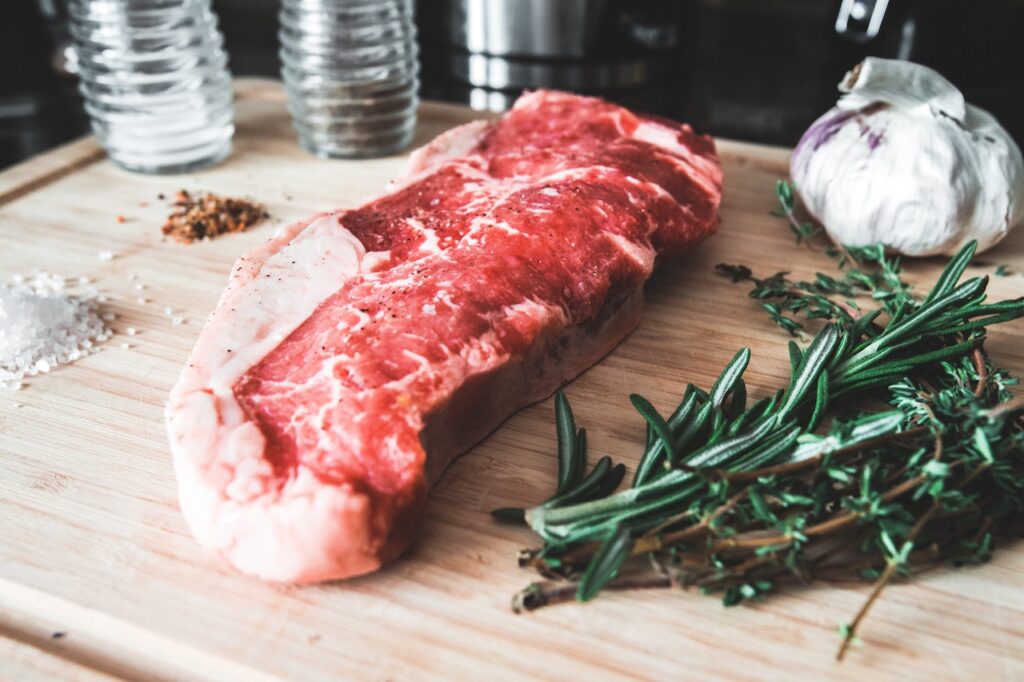As an Amazon Associate we earn from qualifying purchases.
Defrosting meat can be a risky task because of the bacteria build-up. If you learn how to defrost with sous vide, you can save time and add more flavor to the food you prepare. This process can be easier, and safer.
Quick Navigation
How to Defrost With Sous Vide
The easiest way to defrost using sous vide is to set the temperature as low as 38⁰ Fahrenheit and allow the food in a vacuum bag to heat under water. Allow the water to circulate around the bag for several hours. If you want to defrost the food faster, the temperature can be as high as 102⁰ Fahrenheit.

The steps of thawing meat in a sous vide cooker are simple and easy to follow. Moreover, they will save your time considerably. The best way to ensure that the defrosting is complete is to ensure that you follow the time given according to the temperature.
- Fill sous vide cooker, or a water oven with water
- Set the temperature to 40⁰ Fahrenheit (close to minimum defrosting temperature) and let the water temperature rise
- You can increase the temperature if you wish to defrost faster
- Place sealed, and vacuumed bag of frozen meat in the pot or cooker
- Check the sous vide in half an hour and it will be done
- Remove the meat from the stock pot or cooker and cook as required
The time duration for defrosting will depend on the temperature you set. However, the minimum time needed for this process is around twelve minutes. Since the time used to thaw the food with this method is short, there is no bacterial growth or health hazard involved. Moreover, the juices will not drain from the food, leaving it dry, chewy, and tasteless.
Other Methods of Defrosting Food
There can be many ways of defrosting foods. Many home cooks believe that thawing meats and even vegetables can be a time-consuming part of cooking; therefore, they resort to conventional ways that can impair food safety. These methods include:
- Leaving the frozen food out in the open
- Using microwave ovens to thaw the frozen meats and vegetables
- Running freshwater over the frozen bag of food
These methods may have been developed over decades, although they are not recommended due to various reasons. Once you understand the risks of thawing food in the ways mentioned here, you will begin using sous vide as the only healthy option for defrosting without causing any health risks.
The Dangers of Using These Methods
There are numerous risks of defrosting meat by leaving it outside. Firstly, leaving any kind of frozen food out in the open would mean that you are giving a lot of time for the food to absorb bacteria. Moreover, the meats and vegetables have a layer of ice on them, which passes through the food items and as a result, the juices come out of the food, leaving it dry.
Using a microwave may be a fast method, although it is dangerous as the meat or vegetables can become dry and the juice is released. Moreover, the bacterial activity in the meat increases, making it unhealthy for consumers.
Running freshwater on food would mean wasting water. This method consumes a lot of time and would only mean wasting good water while the food can be thawed more efficiently. Water wastage while cooking can be a serious issue, especially if you live in a state where water wastage is unlawful.
Benefits of Sous Vide for Defrosting
There are numerous benefits of using this cooking method to defrost meats and other foods. Firstly, you are using very little water and electric power to maintain a low temperature that will heat the food for a few minutes and bring up the internal temperature.
Moreover, the food will be heated from all sides, so when you open the sous vide bag, the meat or vegetables will be evenly thawed. Other methods can result in uneven thawing, which makes some parts of the portion chewy and dry when fully cooked.
This cooking technique is faster, and much safer than leaving the meat out to defrost, or heating it in the microwave. This style of thawing food is also safe for the environment because you will not be wasting water or heating it to squeeze the nutritious juices out. These juices are always thrown away and are, therefore, a waste of nutrition.

Defrosting Meat Before Cooking in Sous Vide
Many home cooks and novice kitchen helpers might think they need to defrost the meat before cooking, especially since this method involves low-temperature water to prepare the food.
However, you do not need to defrost meat before cooking with this particular technique. You can marinate the meat portions and then seal them in vacuumed bags and freeze. When you need to prepare that portion, you can set the temperature of the sous vide setup and leave the food to cook for hours.
Should You Defrost Steaks Before Sous Vide?
Defrosting the steak before cooking is not necessary. Some might think that there would be a change in taste if you move a marinated meat portion prepared beforehand to the sous vide cooker. Frozen steaks only take a longer time to cook, although the taste remains the same.
The frozen steaks and defrosted steaks taste the same. In fact, defrosting is a part of cooking in this setup with water and bags. When you prepare frozen steaks in sous vide, the results will be great and there will be no difference in the taste.
Conclusion
If you learn how to defrost with sous vide, you will get numerous benefits. Apart from saving time, you can ensure safe and healthy food for your family or customers. The steps to thawing food with this technique are simple to follow and do not require any extra care.
